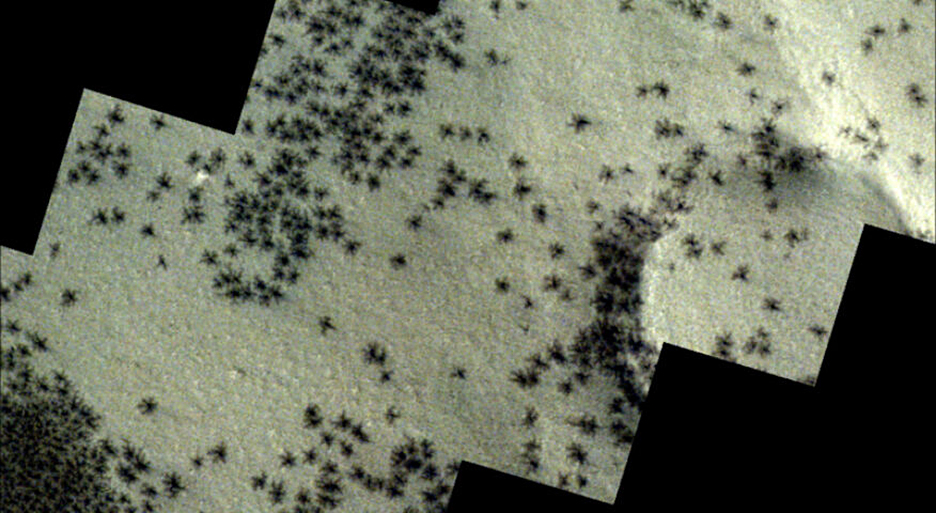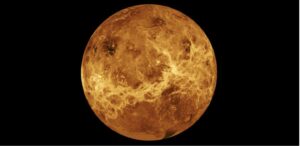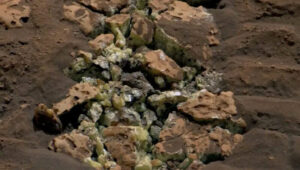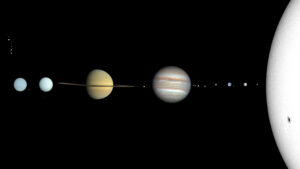Every spring, an unusual phenomenon occurs on Mars: What look like little black spiders start swarming across the Red Planet’s south pole.
Of course, these are not actual arachnids or any living creature. The odd objects, in a region of Mars called Inca City, come from a series of carbon dioxide gas eruptions. Over winter, the temperature plummets to -123˚C — so cold that almost everything freezes, including carbon dioxide.
The gas turns into deposits of dry ice on the planet’s surface. As spring rolls around and the temperature warms, the dry ice sublimates directly into a gas as it does on Earth, missing out the liquid stage altogether.
During this process, the pressure below the surface starts to build up. Eventually, you get a mini-explosion. The carbon dioxide bursts through the ice on the Martian surface, carrying lots of dark dust. The dust and carbon dioxide create huge geysers, spraying the particles into the air.

An overview of Mars’s Inca City. Photo: European Space Agency
Kilometer-wide ‘spiders’
As it settles on the surface, the spidery shapes begin to appear. They all have a similar look: a big dark splotch in the middle, with thin leg-like spindles coming out of it. Though they look tiny in the European Space Agency (ESA) images, they are actually between 45m to 1,000m wide.
Nearly all “spiders” appeared in the Inca City. Formally known as the Angustus Labyrinthus, it earned its intriguing nickname because the ridgelines look similar to Inca formations on Earth. It was discovered in 1972, but no one knows how the ridges formed. The ESA suggests that they could be “sand dunes turned to stone over time.”
The images of the spidery Inca City released by the ESA date back to October 2020. Though Mars has the same four seasons we do, its seasons are double the length of ours here on Earth.
Currently, it is autumn at the Martian south pole. The next spring equinox occurs on November 12, 2024. At that time, astronomers expect to see the space spiders bust from the surface again.






